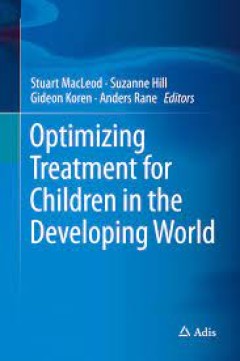Filter by

Design, Synthesis, and Structure-Property Relationship Study of Polymer Field…
The book summarizes Ting Lei?s PhD study on a series of novel conjugated polymers for field-effect transistors (FETs). Studies contain many aspects of polymer FETs, including backbone design, side-chain engineering, property study, conformation effects and device fabrication. The research results have previously scattered in many important journals and conferences worldwide. The book is likely …
- Edition
- -
- ISBN/ISSN
- 9783662456675
- Collation
- xiv, 115 pages
- Series Title
- -
- Call Number
- 620

Designing Beauty: The Art of Cellular Automata
This fascinating, colourful book offers in-depth insights and first-hand working experiences in the production of art works, using simple computational models with rich morphological behaviour, at the edge of mathematics, computer science, physics and biology. It organically combines ground breaking scientific discoveries in the theory of computation and complex systems with artistic representa…
- Edition
- -
- ISBN/ISSN
- 9783319272702
- Collation
- ix, 192 pages
- Series Title
- -
- Call Number
- 005.3

Nuclear Magnetic Resonance Spectroscopy
Nuclear Magnetic Resonance (NMR) spectroscopy is a nondestructive technique that can be used to characterize a wide variety of systems. Sustained development of both methodology and instrumentation have allowed NMR to evolve as a powerful technology, with applications in pure sciences, medicine, drug development, and important branches of industry. NMR provides precise structural information do…
- Edition
- -
- ISBN/ISSN
- 978-3-03842-994-4
- Collation
- -
- Series Title
- -
- Call Number
- 530 NUC

Non-coding RNAs in Colorectal Cancer
This is the first book to provide a broad framework for obtaining an in depth understanding of the state-of-the-art knowledge on abnormalities of non-coding RNAs found to be associated with colorectal cancer pathogenesis. Readers will discover possible mechanisms underlying the substantial roles played by non-coding RNAs in molecular hallmarks of colorectal cancer.This work further provides the…
- Edition
- 1
- ISBN/ISSN
- 978-3-319-42057-8
- Collation
- VIII, 252
- Series Title
- Advances in Experimental Medicine and Biology
- Call Number
- -

Non-coding RNA and the Reproductive System
This book provides an overview of the role and function of regulatory RNAs that lack protein-coding potential in key reproductive tissues. This includes the role of small interfering RNAs (siRNAs), microRNAs (miRNAs), PIWI-interacting RNAs (piRNAs), small nucleolar RNAs (snoRNAs) and long non-coding RNAs (lncRNAs). Through clear, detailed and comprehensive debate, international leading experts …
- Edition
- 1
- ISBN/ISSN
- 978-94-017-7415-4
- Collation
- VII, 198
- Series Title
- Advances in Experimental Medicine and Biology
- Call Number
- -

Next Generation Sequencing in Cancer Research, Volume 2
Latest generation sequencing revolutionizes the fields of cancer research and oncology. This follow-up volume focuses more extensively on single cell sequencing of cancer and trials in drug resistance. Another exciting feature is the bioinformatics tools given, that can be used on cancer genome studies. Scientists around the world are attempting to find the root cause of cancer. A reasonable ca…
- Edition
- 1
- ISBN/ISSN
- 978-3-319-15810-5
- Collation
- XVIII, 493
- Series Title
- -
- Call Number
- -

Sports Injuries Prevention, Diagnosis, Treatment and Rehabilitation
Sports Injuries: Prevention, Diagnosis, Treatment and Rehabilitation covers the whole field of sports injuries and is an up-to-date guide for the diagnosis and treatment of the full range of sports injuries. The work pays detailed attention to biomechanics and injury prevention, examines the emerging treatment role of current strategies and evaluates sports injuries of each part of musculoskele…
- Edition
- -
- ISBN/ISSN
- 978-3-642-36569-0
- Collation
- -
- Series Title
- -
- Call Number
- -

Optimizing Treatment for Children in the Developing World
This book is intended to communicate current best practice in pediatric clinical pharmacology and clinical pharmacy with special consideration of the prevailing circumstances and most pressing needs in developing countries. It also addresses measures that may be taken in countries with emerging economies through organizational and political adjustments to reduce unacceptable levels of morbidity…
- Edition
- -
- ISBN/ISSN
- 978-3-319-15750-4
- Collation
- -
- Series Title
- -
- Call Number
- -

Developing community schools, community learning centers, extended-service sc…
This book focuses on special organizational configurations for schools in diverse parts of the world. Some of these new organizational and institutional designs are called multi-service schools, others are called extended service schools and still others are called community learning centers. While these schools have different names and notable different characteristics, they belong in the same…
- Edition
- -
- ISBN/ISSN
- 9783319256641
- Collation
- -
- Series Title
- -
- Call Number
- 370

Optimization of Integrated Supply Chain Planning under Multiple Uncertainty
The subject of this book is supply chain logistics planning optimization under multiple uncertainties, the key issue in supply chain management. Focusing on the strategic-alliance three-level supply chain, the model of supply chain logistics planning was established in terms of the market prices and the market requirements as random variables of manufactured goods with random expected value…
- Edition
- -
- ISBN/ISSN
- 978-3-662-47250-7
- Collation
- -
- Series Title
- -
- Call Number
- -
 Computer Science, Information & General Works
Computer Science, Information & General Works  Philosophy & Psychology
Philosophy & Psychology  Religion
Religion  Social Sciences
Social Sciences  Language
Language  Pure Science
Pure Science  Applied Sciences
Applied Sciences  Art & Recreation
Art & Recreation  Literature
Literature  History & Geography
History & Geography